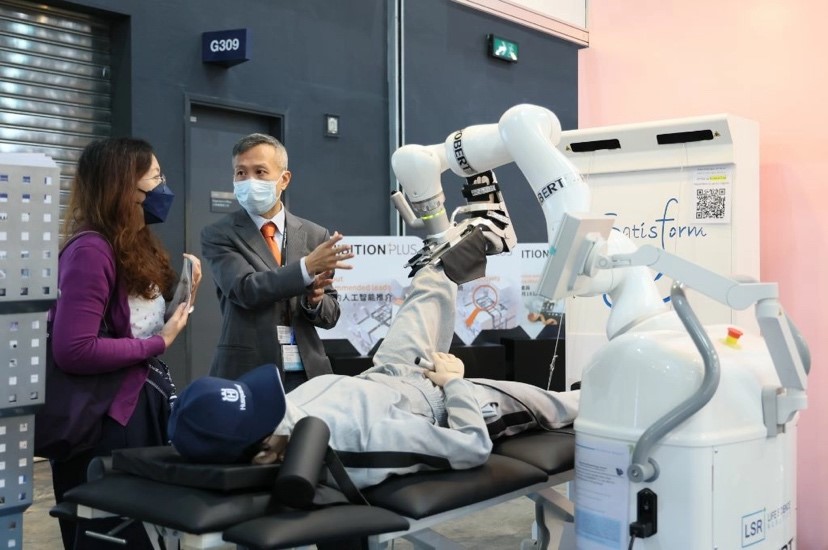The world is a very different place compared to a few years ago – especially for the healthcare industry. With the onset of the COVID-19 pandemic, the public’s awareness towards the importance of quality healthcare and medical equipment has skyrocketed dramatically. We have never been so concerned about our health and well-being compared to any period pre-pandemic.
According to market research, the healthcare industry is one of the biggest booming sectors in the world. With a market value of USD 60.72 billion and a CAGR of approximately 11% up to 2027, it is no surprise why many businesses are investing huge money in developing the sector to partake in the medical industry boom[1].
To differentiate from the competition, businesses engaged in or looking to expand into the healthcare industry should understand and utilise the market trends below in their business strategies:
#1 Telemedicine and Virtual Healthcare Services
Though telemedicine services have been around for quite some time, it has never caught on well pre-pandemic. However, with shortages of healthcare personnel and concerns from individuals for in-person visits during COVID-19, telemedicine is a trend that is growing faster than ever. The global telemedicine market was valued at USD 170 billion in 2022 and is expected to grow with a compound annual growth rate of 29.3% up to 2027[2].

Virtual healthcare services allow patients to connect with medical professionals conveniently, allowing individuals to receive more accessible and affordable consultations than traditional in-person visits. These virtual solutions also enable doctors to communicate with more patients and reduce time wastage due to administrative and no-show bookings – helping to minimise manpower shortages.
According to a survey in 2022, most consumers who have used telehealth services would do so again in the future. In particular, many healthcare users prefer virtual appointments to in-person visits for routine care and regular check-ups, mainly attributing convenience as their top reason for using telehealth[3].
#2 Healthcare with AI & Robotics
With tech developments playing a massive role in our modern lives, medical companies constantly seek ways to incorporate technology into the field. Through automation and AI, medical robotics can significantly help reduce workload and prevent errors in this understaffed industry.
In some hospitals and medical facilities, medical robotics have been introduced on hospital floors to help monitor patients, assist in routine tasks, and deliver goods. On a more advanced level, robotics can also be used in surgery to reduce surgical complications and infections in patients drastically[4].
#3 Internet of Medical Things (IoMT)
Internet of Medical Things (IoMT) is the development of a network of connected devices integrated with cloud computing services. Wearable monitoring devices combined with digital healthcare applications are an example of widespread use in IoMT that allow individuals to take a proactive approach to preventive healthcare and early diagnosis rather than a passive one.
Wearable devices collect data through sensors and track body vitals such as heart rate, blood pressure, body temperature, and many more. These health datasets are recorded through IoMT systems and can be reported to other healthcare professionals for analysis and diagnosis. AI can also be used to monitor vitals and alert users or hospitals of possible health complications that may be happening.

#4 Healthcare Cybersecurity
Increasing dependence on technology does not come without risks. As patient and individual information is constantly being digitally accessed and analysed, healthcare providers are prone to security breaches and cyber-attacks. In January 2023 alone, 30 out of 38 large-scale security breaches involved healthcare providers – affecting millions of individuals and patient data sets[5].
These security breaches affect the reputation of healthcare facilities and pose significant risks for individuals as data can be easily compromised. As a result, many medical service and product providers invest in cybersecurity products, creating a boost within the healthcare cybersecurity market.
Keeping the Pulse Strong
With the medical industry boom expected to continue strong in the upcoming years, industry players should update themselves with the latest development and products within the healthcare sector.

From 16-18 May 2023, HKTDC’s Hong Kong International Medical and Healthcare Fair returns to provide businesses and professionals with the perfect platform to connect with each other and further develop their business. This fair features exhibitors from specialities ranging from rehabilitation equipment to biotechnology, along with insightful seminars to understand the latest trends and know-hows in the industry.
Click the banner below and register now to join us at the Fair:
You can also look for trending healthcare products online via below:
- https://www.statista.com/outlook/dmo/ecommerce/beauty-health-personal-household-care/health-care/worldwide
- https://www.researchandmarkets.com/reports/5004425/global-telehealth-market-2023-2027
- https://www.fiercehealthcare.com/digital-health/growing-number-consumers-prefer-telehealth-routine-care-survey-finds
- https://www.uclahealth.org/medical-services/robotic-surgery/what-robotic-surgery
- https://compliancy-group.com/january-2023-healthcare-breach-report/#:~:text=Hacking%2FIT%20incidents%20remained%20the,of%20which%20affected%20healthcare%20providers
Subscribe to NewsBites and stay updated on the latest business trends and news.



















